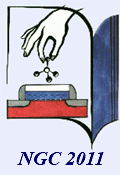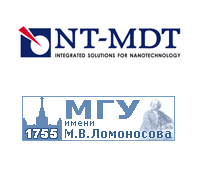
Nano and Giga Challenges
in Electronics, Photonics and Renewable Energy
Symposium and Summer School (Tutorial Lectures)
Moscow - Zelenograd, Russia, September 12-16, 2011


|
Nano and Giga Challenges in Electronics, Photonics and Renewable Energy Symposium and Summer School (Tutorial Lectures) Moscow - Zelenograd, Russia, September 12-16, 2011 |  |
Commentary Dmitri Golberg
The exact knowledge of physical and chemical properties of a given nanomaterial, in particular, on the individual structural level (that gives the clearest scientific picture, free of artifacts) is of prime importance as far as its real, rather than speculative integrations into any modern technology are concerned. Such properties should be precisely measured in order to clearly demonstrate that such integration and, therefore, substitution of existing well-tested and historically reliable materials, e.g. silicon in electronics, is essential, realistic and profitable. However, in many cases, the property measurements are performed using instruments with no direct access to the nanomaterial internal structure, namely, scanning electron microscopes (SEMs) and atomic force microscopes (AFMs). This has significantly limited the relevance of acquired data because any particular structural features of an object prior/during/and after its testing are entirely hidden. Therefore, typically, the measured properties have not been directly linked to a particular nano-morphology, crystallography, spatially-resolved chemistry and existing and/or appearing defects. This explains a common and wide scatter of the mechanical and electrical data reported by various scientific groups which has confused the practical engineers and led to many uncertainties with respect to the real nanomaterialís application potentials. It is also worth noting that, to date, apart from the case of standard multi-walled carbon nanotubes, most of the electrical, mechanical and/or thermal properties of many individual inorganic nanostructures, and their hybrides, have remained basically unknown. Only rather recently the efforts on true nanomaterialsí property measurements under the high-spatial resolutions peculiar to a high-resolution transmission electron microscope (HRTEM) have become popular worldwide and started to attract full attention. The modern methods of in situ TEM allow one to not only manipulate with a nanoscale object at the nanometer-range precision but also to get deep insights into its physical and chemical statuses. Dedicated TEM holders combining the capabilities of a conventional HRTEM instrument and atomic force -, and/or scanning tunneling microscopy probes become the powerful tools for nanomaterials analysis. The key point of such experiments is that the mechanical and electrical transport data are acquired on an individual nanostructure level under ultimately high spatial and energy resolutions achievable in HRTEM and thus can directly be linked to morphological, structural and chemical peculiarities of the nanomaterial. I do hope that this new and interesting topic will attract the deserved attention of the NGC2011 researchersí and studentsí audiences and promote its fast and effective development within many Russian research institutes and universities towards better understanding of the nanomaterials and their merits for nanotechnology.
Selected bibliography |
Empowered by Nano & Giga Solutions and NT-MDT
© 2010